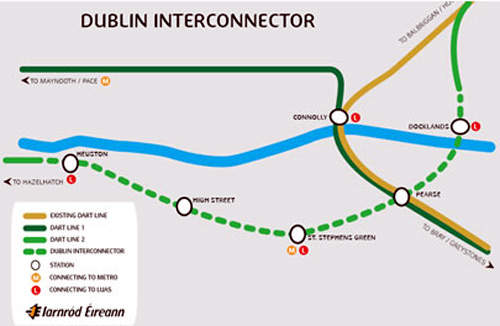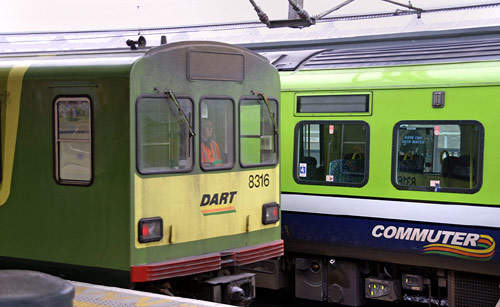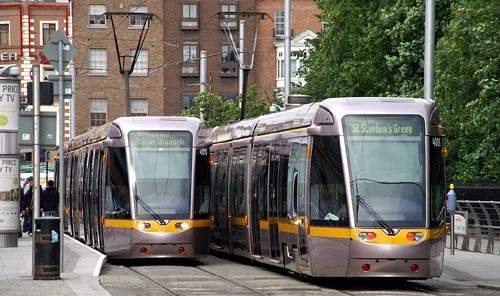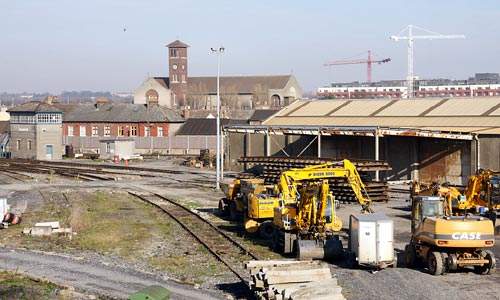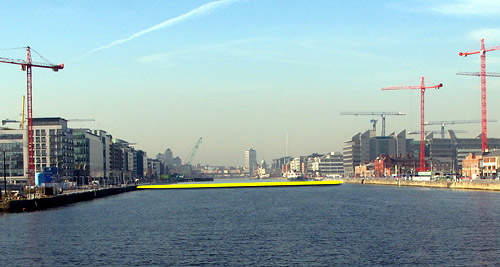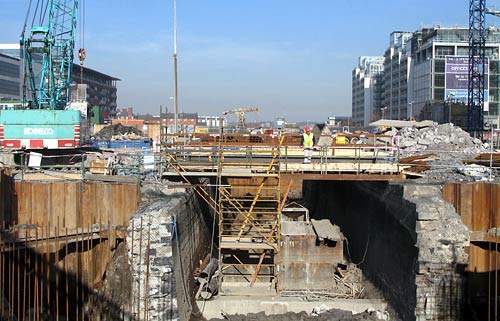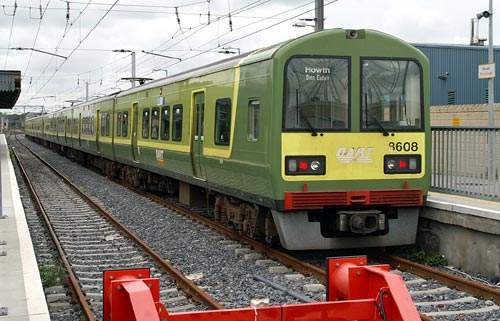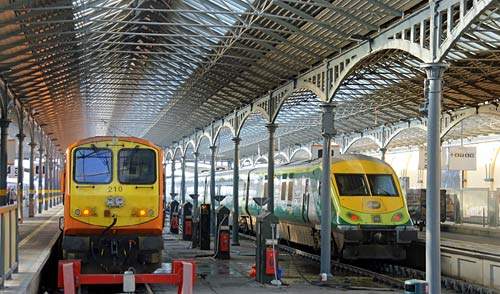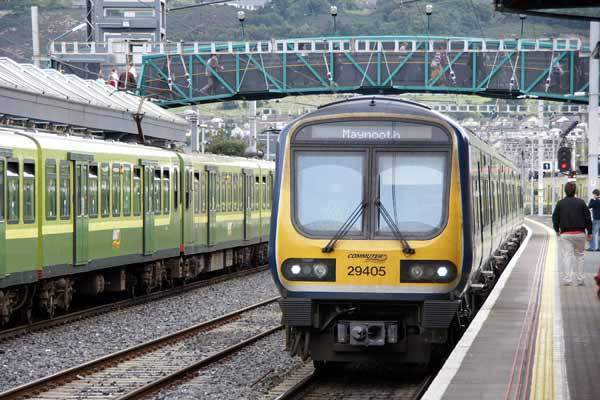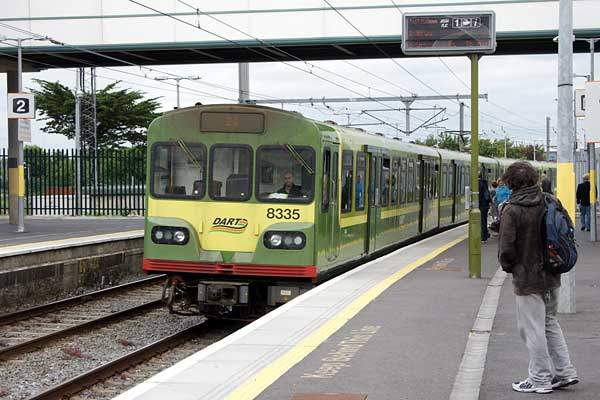An acronym of Dublin Area Rapid Transit, the original DART project was to make better use of the city’s exciting heavy rail infrastructure with more frequent and modern local transport.
The investment approved in 1979 to electrify the 25-station route around Dublin Bay from Howth in the north, through the city centre south to the resort and commuter town of Bray, represented a reversal of years of rail decline.
Although it was to be another 15 years before Irish Rail’s (Iarnród Éireann/IE) DART expanded north from Howth Junction to Malahide and south from Bray to Greystones, the success of Ireland’s only intensive urban rail service is beyond doubt.
Concurrent with DART’s early years was the rise of the Irish economy, and although the national population is relatively small, it increased to just over four million by 11% between 1996 and 2006. More significantly the growth has been largely urban, notably in and around Dublin, but this has made structural weaknesses more apparent, with private transport and buses clogging a road layout quite unsuited to heavy use.
The project
The project is majorly funded by the Irish Government under the Transport 21 investment programme and partly funded by the Ten-T Executive Agency of the European Commission.This initiative was hoped to make up for earlier neglect, investing heavily to create a modern transport infrastructure. Added prosperity brought more car ownership, thus public transport developments needed to be of a sufficient standard and coverage to encourage people to leave the car at home.
Dublin’s Luas tram system opened in 2004, followed by an ambitious programme that included further Luas expansion and commitment to a two-line metro scheduled to begin services from 2012.
Under the national Transport 21 investment framework for developments between 2006 and 2015, DART is to be expanded into a true system and with more mode interchanges to take on a far bigger role.
Along with the Luas Red Line C1 extension due to open in late 2009, DART Underground is a vital part of rail infrastructure to service the needs of the high-profile Docklands redevelopment in eastern Dublin. Much of the area was already owned by the railway for the sidings that once served now defunct port areas.
Infrastructure
DART Interconnector (also ‘DART Underground’) is a projected new 5.2km (3.2 mile) tunnel and connecting lines to be operated only by electric DART stock. Built to the Irish 1,600mm gauge and with 1,500V dc overhead electrification, the new twin-track alignment will leave the original line south of Clontarf Road station, entering the tunnel section about 100m east of the IE Commuter Docklands terminus opened in 2007.
It will pass under the Docklands area by Spencer Dock, beneath the River Liffey before curving westwards beneath Pearse IE station and St Stephen’s Green towards Heuston, the main line terminus for lines into Dublin from the west, with DART services terminating at Hazelhatch, Co Kildare. As with the tunnel itself, this will require new electrification.
Contrasting with the original Luas Red and Green routes built as separate operations without physical connection, the Interconnector will facilitate an integrated suburban railway system. With related electrification of suburban lines north and south of the Liffey, the DMU (‘railcar’)-operated commuter services in greater Dublin will decline relative to DART operations.
The exact route had not been finalised, whether the Docklands (Spencer Dock) station would be beneath the Liffey to serve both sides of the river, or on the north side to give direct Luas Red Line interchange. Similarly, the Heuston stop may be beneath the present station or just to the east where land near the Guinness brewery is under consideration.
Four tunnel-boring machines are to be used in construction, mainly through limestone bedrock at 5m below the Liffey riverbed. They will create the twin bores from the Heuston and Docklands portals, all working towards St Stephen’s Green. Cut and cover will mainly be used to provide sites for the projected five Interconnector stations.
As the line will provide Christchurch with its first rail connection, this will be the only one in the project without another heavy rail or Luas interchange.
Of special note is the future importance of St Stephen’s Green at the south of the city’s Grafton Street shopping area, destined to be the interchange of Luas, DART Interconnector and Metro North for onward connection to Dublin Airport. The DART station would be beneath the Metro, with the proposed Line BX Luas city centre link also accommodated in the development.
Just south of the Liffey, Pearse station will assume a greater role in becoming the principal DART interchange, due to ending the current north-south service axis, replaced by two routes. Trains from northern termini Howth or Malahide would use the Interconnector to reach Heuston, some extending to Hazelhatch on the Kildare line.
From stations to the south of Dublin, DART trains would pass through Connolly to terminate at Maynooth, presently on the Western Commuter service, a section that will be electrified to accommodate this pattern.
Rolling stock
DART stock has been delivered in batches since 1983, a mix of 60 two- and four-car units. A platform-lengthening programme allowed for longer formations being used. System expansion will require substantial new orders, as would replacement of some of the earlier fleet.
Details have yet to be published, although the specifications will cover the demands of safe in-tunnel operation. In spite of physical connection to IE’s main lines, the Interconnector will use only DART stock, likely to be in eight-car formations. Including three intermediate stops, the Heuston to Dockland journey time would be around 10min, with potential 3min headways.
Signalling and communication
Except for Howth Junction-Howth, all DART trains currently share tracks and signalling with other IE services. The central traffic control is at Connolly. Platforms feature real-time indicators and destinations of arriving services, supplemented by on-train information for passengers. Signage features English and Irish (Gaeilge) versions. Extensive resignalling of the central area will be required for the realigned DART services, with throughput at Connolly increasing by 50%.
The future
In spite of the Interconnector tunnel being little over 5km long, the expanded electrified DART operations, quadrupling of the busiest shared tracks and service restructuring are expected to deliver a four-fold increase in passenger journey capacity to 100 million in the greater Dublin area.
IE anticipates peak usage of overall commuter services to triple from 2008 levels to 22,000 by 2020. The project will involve a public-private partnership and will cost around €2bn, excluding the upgrading west of Heuston.
In November 2011, IE announced that it would postpone the planned €1.2 billion extension of the DART underground project, but llater in December 2011 the government decided to go ahead once more. The Railway Order, granted in the same month, indicates that construction will be completed within 10 years. Construction will start in 2015 and is expected to be completed by 2021.

